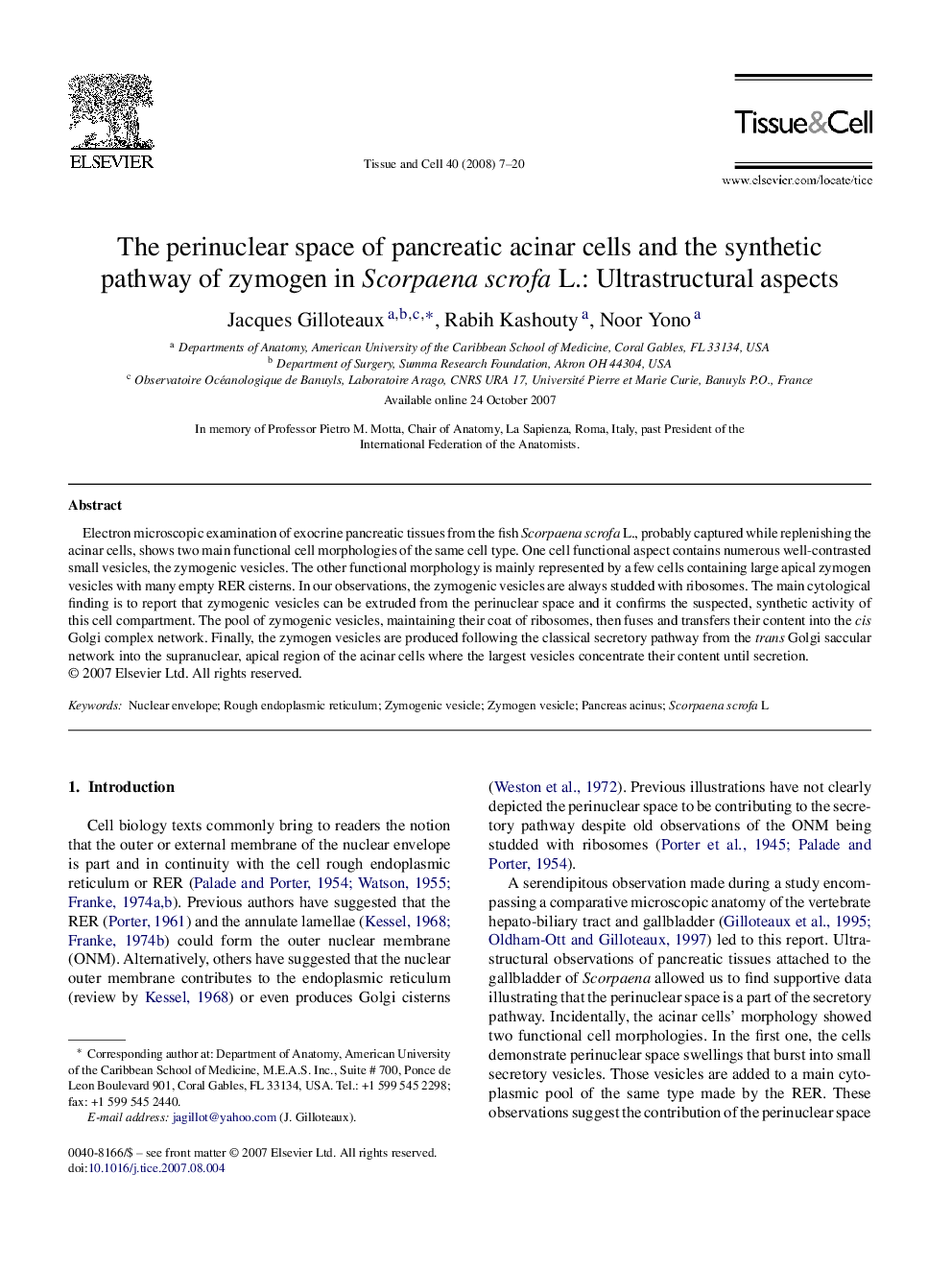| Article ID | Journal | Published Year | Pages | File Type |
|---|---|---|---|---|
| 2204119 | Tissue and Cell | 2008 | 14 Pages |
Electron microscopic examination of exocrine pancreatic tissues from the fish Scorpaena scrofa L., probably captured while replenishing the acinar cells, shows two main functional cell morphologies of the same cell type. One cell functional aspect contains numerous well-contrasted small vesicles, the zymogenic vesicles. The other functional morphology is mainly represented by a few cells containing large apical zymogen vesicles with many empty RER cisterns. In our observations, the zymogenic vesicles are always studded with ribosomes. The main cytological finding is to report that zymogenic vesicles can be extruded from the perinuclear space and it confirms the suspected, synthetic activity of this cell compartment. The pool of zymogenic vesicles, maintaining their coat of ribosomes, then fuses and transfers their content into the cis Golgi complex network. Finally, the zymogen vesicles are produced following the classical secretory pathway from the trans Golgi saccular network into the supranuclear, apical region of the acinar cells where the largest vesicles concentrate their content until secretion.
